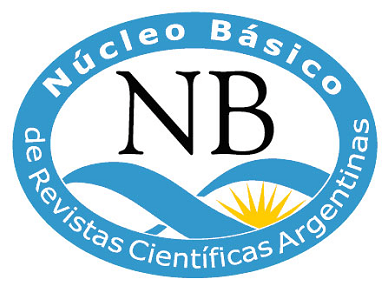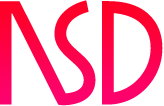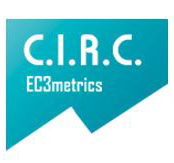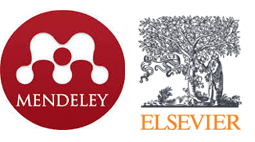Submissions
Submission Preparation Checklist
As part of the submission process, authors are required to check off their submission's compliance with all of the following items, and submissions may be returned to authors that do not adhere to these guidelines.- The petition has not been previously published, nor has it been submitted to another journal (or an explanation has been provided in Comments to the editor).
- The file sent is in Microsoft Word format.
- Web addresses have been added for references where possible.
Author Guidelines
Articles submittions
There are two deadlines for delivering articles: April and July of each year (see day in each call).
Articles must be uploaded through this system, Open JournalSystems (OJS), by registering with a username and password.
Guidelines for submitting articles
The submitted article must be original and unpublished and written in a Word text processor in Spanish, Portuguese or English, depending on the origin of the authors. Authors must adhere to the following guidelines:
1. AUTHORS:
Up to 4 authors. Researchers, teachers, extension workers, students, managers and non-teachers can write. Members of government or civil organizations linked to university extension practices may be co-authors.
The Editorial Board will preserve authorship data prior to the review process. Each author cannot submit more than 1 article per call.
2. ARTICLE FORMAT:
Once the section to which the article is going to be presented has been chosen (see Information for authors 3. Topic and sections), the following should be considered:
- Extension of the articles: 20 pages; "Management challenges" and "Interventions": 15 pages; "Review of books":
- Review of books: 2 page for descriptive reviews. 3 pages for critical reviews.
Size and typography: A4; Margins of 2 cm; Times New Roman 12; line space 1.5.
3. STRUCTURE AND CONTENT:
- Cover page. . On the first page of the article you must enter the following information: name and surname; academic affiliation and title; Institutional e-mail, ORCID number and type of contribution regarding the experience reported according to the taxonomy stipulated by CReDit. You must indicate which section the article applies to: Perspectives, Management Challenges; interventions; Book reviews.
- Title: must be brief and representative of the content to be developed. It must be in three languages: Spanish, Portuguese and English.
- Summary: up to 150 words in Spanish, Portuguese and English.
- Keywords: up to 5 keywords or expressions, in Spanish, Portuguese and English, separated by semicolons.
- Structuring: the article must contain:
- An introduction (where the objectives of the article are presented, the topic or problem that will be addressed and the structure that the article will have).
- From a series of titles and / or subtitles, the authors will be able to present coherently and with theoretical and conceptual rigor the subject or problem that it approaches.
- A final reflection in which the main lines presented are recovered, challenges, limitations, etc. can be presented, depending on the section to which the article is submitted. - Citations: they go in the body of the text. APA Standards (See examples)
- Notes and clarifications: must be included with the option "Insert footnotes". Bibliography will not be included in the notes (bibliographic references are included), except for a comment on it. It is recommended that the notes be brief. The typeface should be Times New Roman 10.
- References: only those that were mentioned in the body of the article will go. They will be arranged at the end of the article, arranged alphabetically. APA rules
- Tables, tables and figures: their inclusion is enabled in order to expand and / or provide information on the article.
Tables: are tables, usually double entry, containing text.
Tables: Expression of numerical relationships, about which there are references or explanations in the text; the data must be arranged so that they can be read vertically
Figures: are diagrams, flow charts, diagrams, drawings, maps, plans, and statistical graphs.
In all cases, they go with Arabic numeration; they must have a title; mention the source and it must be editable (so that the designer can arrange it according to the aesthetics of the magazine).
Photographs, advertisements or promotional posters are not allowed.
- Writing: the writing must:
- be precise and clear in writing (avoid redundancy, abuse of acronyms, idiomatic expressions specific to a country or region, consider institutional logic to be evident). An effort should be made to ensure that the text is pleasant to read.
- have conceptual rigor, without losing sight of the diversity of readers who are the Jorunal's target audience.
- present conceptual references for university extension and a critical analysis that problematizes the theme.
- to present the precondition for the extension practice, the situation that one wished to modify and the changes actually produced during the intervention process. Hence, writings describing recently approved projects or with little trajectory in the territory are not accepted.
- account for the link with the social actors with whom one works.
- enter the supporting data of the investigations or projects referred to, in accordance with Argentine Law No. 26,899 on Institutional Open Access Repositories
- For book review:
PUBLICATION DATA
- Title of the book
- Author/s of the book
- Year of publication
- Editorial
- ISBN
- Free download site (if any)
- Cover (.pdf / .jpg)
4. APA STANDARDS (citation examples and references)
- REFERENCES OF AUTHORS IN THE BODY OF THE TEXT
References to authors the body of the article
- One of the most important theories is the Theory of the Psychology of Values (González, 2010).
- One of the most important theories is the one proposed by González (2010).
- González (2010) proposed one of the most important theories of values in psychology.
References to a work by two authors
- The phenomenon of extrasensory perception has been widely criticized (González and Rojas, 2011).
- One of the strongest criticisms is that of González and Rojas (2011).
- González and Rojas (2011) made a strong criticism of the phenomenon of extrasensory perception.
References to a work with more than two authors
In the case of three or more authors, they will all be cited the first time they refer to their work. Thereafter, only the last name of the first author will be used, followed by the words "et al." And then the year of publication. Here is an example:
(This is done the first time they are cited in the text)
- Theories of cognitive learning have been important in this regard (Rojas, Vargas, González and Gutiérrez, 2007).
Then it is cited as follows:
- The theory of cognitive learning of Rojas et al. (2007) exposes how an organism can learn by other means.
- Other forms of learning have been described in the literature on cognitive learning (Rojas et al., 2007).
- TEXTUAL QUOTES
The textual citations of two lines or minors can be followed in the text, using quotation marks to indicate that it is a textual quote. At the end of the appointment, the number or page numbers in which the original text appears will be indicated in parentheses. For example:
- Keller mentions that: "Among the few who dared to question this belief was Ivan Sechenov, a Russian physiologist, who has been called the father of reflexology" (1989, p. 39).
If the appointment is more than three lines, it will be indented. This type of appointment is enclosed in quotation marks. At the end of it, the number or page numbers in which the original text appears will be written in parentheses. For example:
- Keller (1989) referred to Sechenov's book in the following terms:
"It is said that Sechenov's book was popular among the intellectuals of that time. This may be because Pavlov read it in his youth and it made a deep and lasting impression. It may even have led to the field of physiology and, ultimately, the physiology of the brain. Years later, Pavlov described it as a real and brilliant attempt, extraordinary for his time, to represent our subjective world in a purely physiological aspect"(39-40).
(Continues the normal text)
- TEXTUAL QUOTES
- REFERENCES
The references at the end of the work should be ordered alphabetically by last name of the first author.
If the first author is the same, but the second author is different, the citations will be arranged taking into account the last name of the second authors.
If the same author or authors appear several times, the appointment will be ordered based on the year of publication (starting with the oldest and ending with the most recent).
If the same author has several works published in the same year, a lowercase letter (a, b, c) will be used immediately after the year of publication to differentiate them.
Book references
- González, R. (2010). Introduction to contemporary psychology. Editorial ULACIT.
- González, R. and Ramírez, J.L. (2007). The theory of values. Prentice-Hall.
- Hernández, E .; Rojas, H. and González, R. (1998). Some contributions of psychology to the study of values. Pyramid.
- Muñoz, A. (2011). Introduction to physics. New Decade.
Chapters of edited books
- Arce, J.C. and Gutiérrez, M. (2012). Financial indicators and their relationship with the Latin American future economy. In: R.J. Porras (ed.), The economic direction of Latin America (pp. 100-121). New Way.
Magazine references
- Mora, H. and Domínguez, L. (2010). Cognitive psychology and its relation to the sciences of the brain. News in Cognitive Sciences, 14, 330-337.
In the case where the journal is registered with a DOI number:
- Campos, A. and Arce, J. (2011). The university accreditation systems in Central America. Quality Magazine in Higher Education, 3 (3), 11-22. http://doi.org/12.2075 / 0257-7644.23.1.221.
In the case where the journal is referenced in a website:
- Mota de Cabrera, C. (2006). The role of writing within the curriculum of teaching and learning English as a second language (esl / efl): A historical perspective. Pedagogical Action, 15 (1), 56-63. http://www.saber.ula.ve/accionpe/ (25/11/2012)
References of newspaper articles
- García, M. (June 3, 2009). "Consequences of free trade agreements in Central America". La Prensa Libre, p. 14.
- Castro, E. (May 25, 2011). "The pulse of the current Latin American economy". The Nation, pp. 15A, 17A.
- Bonet, E. (February 2, 2011). Thousands of people pray in Tahrir Square in Cairo. Time. http://www.eltiempo.com/
Thesis references
Alfaro, J. (2009). "Software production and industrial training". Unpublished undergraduate thesis, ULACIT, San José, Costa Rica.
Chavarría, G. (2008). "Application of conflict resolution to the workplace". Master's thesis not published, Universidad Nacional, Heredia, Costa Rica.
Web page references
- National Insurance Institute (2011). "Occupational health standards for private companies". http://www.ins.go.cr/normas.html (25/11/2012)
WIKIPEDIA references
- Article name. (Without date). In Wikipedia. http: //xxx.xxxxxxxxxx.xx/xxxx/xxx
References of a blog
- PZ Myers. (January 22, 2007). The unfortunate prerequisites and consequences of partutioning your mind [Message in a blog]. http://science-blogs.com/pharyngula/2007/01/the_unfortunate_prerequisites.php
Scientific data references
Regardless of the different formats in which scientific activity is recorded (flat, hierarchical, relational, XML databases, etc.), interoperability must be guaranteed and data reuse must be facilitated. These datasets are essentially dynamic (unlike documents) and it is necessary to ensure that the citation practice incorporates data versioning, that is, it is capable of maintaining the history of changes and additions to the original dataset.
The correct reference of these resources should be done as follows:
Last name, Initials of the author's name (Year of publication). Dataset title in italics [Dataset]. Version (date consulted). Resource DOI or URL
For other types of references, consult the APA Standards Manual, 7th. Edition in https://normasapa.pro/descargas/
Privacy Statement
Os nomes e endereços informados nesta revista serão usados exclusivamente para os serviços prestados por esta publicação, não sendo disponibilizados para outras finalidades ou a terceiros.


























